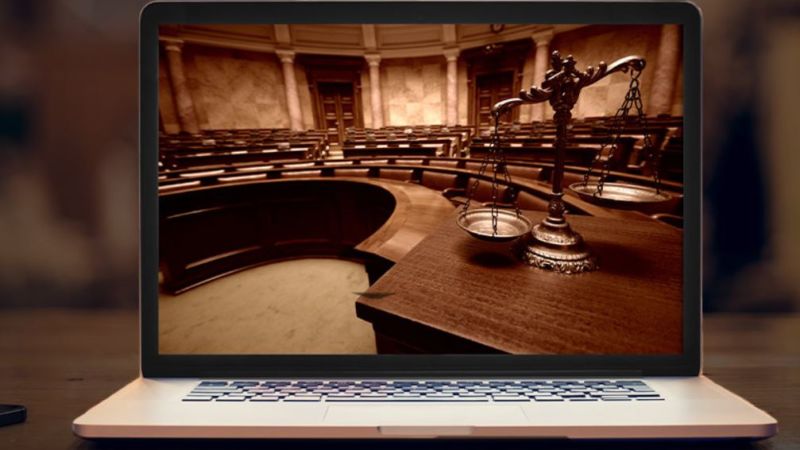In a recent panel hosted by Stanford Law brought together legal tech experts to offer insight into the future state of civil justice and technology's impact on access to justice
New technologies are transforming the practice of law; and while the pandemic certainly accelerated legal technology growth, this transformation was in motion long before COVID-19 emerged.
This acceleration also is leading to the rapid rise of a growing catalog of digital tools that serve the unrepresented, especially in areas such as e-discovery, technology-assisted review, legal analytics and outcome prediction software, and online dispute resolution platforms that many courts have begun to deploy
The big question, of course, is whether legal tech will widen access to justice by reducing costs to expensive legal services or will it exacerbate existing disparities?
In a recent online panel discussion hosted by Stanford Law School, Legal Tech and the Innovation Ecosystem, experts on machine learning, the legal services industry, legal ethics, and lawyer regulation provided insight into legal tech’s likely trajectory over the near- to medium-term, particularly as it impacts access to justice.
Focusing on legal tech advances
Panel moderator David Freeman Engstrom, Professor of Law at Stanford University, asked panelist where they thought legal tech can plausibly have the most impact, considering technical regulatory and organizational constraints. “Lost in this rush to foretell a distant, robotic future are an array of more concrete and more pressing concerns,” Engstrom said.
He also questioned how new digital technologies can expand access to justice for low- and moderate-income individuals who often cannot retain counsel or may lack the sophistication to engage formal legal institutions like courts.
Panelists agreed that America has an ever-deepening access to justice crisis that often sees lower-income and middle-class Americans struggling to afford lawyers or to address serious legal problems. Panelist Ben Barton, Professor of Law at the University of Tennessee, explained that the United States ranks a dismal 36th in the world in terms of the fairness of its civil justice system, falling between Malaysia and Jordan, according to the 2020 World Justice Project Rule of Law Index.
Legal tech is one way the market is responding to this unmet demand, said Barton.
The Über of legal services
About 80% of the legal needs of poor Americans remain unmet, despite the fact we’re living in a society that has no shortage of lawyers or legal organizations. It is the cost and the access that are the highest hurdles. Yet, technology and the use of more non-lawyers has started to act as disrupting agents — similar to Über and Airbnb — that can drive growth within the gray area of regulatory space, leading to the destruction of existing models and lasting change to entire industries.
This is happening in the legal space as well, Barton said. “LegalZoom is a perfectly good example of finding a regulatory gray area and plowing in without permission and growing until you can’t be stopped.”
On the lower end of the legal market, it’s individuals who need legal assistance — not corporations or big law firms — who are turning to these innovative types of technologies. These technologies also are benefitting legal aid societies and pro bono attorneys that are facing shrinking budgets and more demand on their time and resources.
For example, legal aid providers now can help their clients by using technology to automate complicated matters like filing for personal bankruptcy or small businesses and lower-income Americans can get access to standard forms required for certain legal filings.
Further, pro se litigants, those who represent themselves in court, file millions of civil cases each year and can greatly benefit from these legal-access technologies. And legal tech has helped pro se parties by fostering online legal advice via chatbot; and apps such as TurboTax and Rocket Lawyer help individuals complete legal documents, from taxes to divorces.
“All of the action around innovation in legal tech is coming from the lower end of the market,” Barton explained. “We are seeing online dispute resolution with non-lawyers appearing and fillable forms built into court processes.”
Barriers to more legal tech
Not all panelists were as enthusiastic, however. Gillian Hadfield, Professor of Law and Strategic Management at the University of Toronto, said she believes the advances in legal tech for underrepresented groups is still a tiny drop in the bucket relative to the need for access.
The resources we see big corporate law departments and law firms employing in this area represent the bulk of the innovation. Hence, self-represented litigants may still face significant barriers in access to justice despite the evolution of high-tech tools with natural language processing and artificial intelligence.
Hadfield said that in the near future, the key barriers to advances in legal tech will fall into a few categories, including:
-
-
- regulatory barriers in the legal profession, both in corporate law and with pro se litigants as U.S. regulations could continue to be a critical blocker to non-lawyer access;
- lack of financial and human capital to develop legal technologies;
- problems of scale;
- access to data in public and private sectors to build better machine learning models; and
- challenges in how machines will actually learn the law.
-
Despite today’s advances in legal tech, self-represented litigants face many challenges in securing fair access to civil law and procedure. And as we continue to see a rise in cases filed by non-lawyers, the hope is that legal technology will promote meaningful access to the courts and encourage the increased use of plain language, process simplification, procedural fairness, and equal access.







